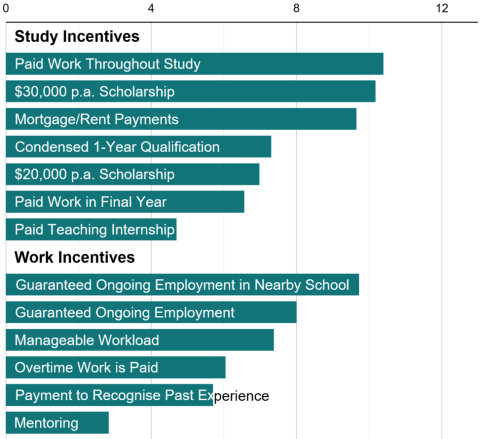Incentivising excellence: Attracting high-achieving teaching candidates
BETA worked with the Quality Initial Teacher Education Review to test what incentives would appeal to high-achieving teaching candidates.
We ran a discrete choice experiment with young high-achievers and mid-career professionals.
The below graphs show the additional probability of choosing teaching over a ‘baseline job’* (in percentage points).
Young High-Achievers (18-25 year-olds with an ATAR of 80 or above)
Image

Mid-Career Professionals (26-60 year-olds with a Bachelor’s degree or higher)
Image

*For our study, we defined baseline job to have no study or work incentives, $60,000 starting pay and $100,000 top pay.
Work, study and financial incentives play a part in encouraging people to a career in teaching. This research contributes to our understanding of how to best attract high-achieving candidates to the profession.

